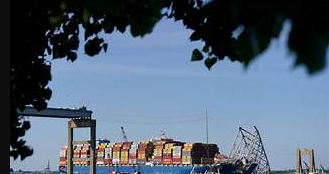After months of cleanup, the channel is restored, allowing two-way traffic to resume.
The main shipping channel to Baltimore’s port has fully reopened to its original depth and width, following the March 26 collapse of the Francis Scott Key Bridge. The collapse, caused by a container ship losing power and crashing into a support column, blocked most maritime traffic into the harbor for weeks. In a significant achievement, officials announced the channel’s full reopening on Monday, marking the end of a major cleanup effort that removed an estimated 50,000 tons of steel and concrete from the Patapsco River.
The incident also resulted in the tragic deaths of six roadwork crew members, all Latino immigrants, who were working overnight to fill potholes on the bridge. Following the collapse, the Port of Baltimore, one of the busiest in the country, was effectively shut down, disrupting the local economy and impacting thousands of workers, including longshoremen and truckers. The port processes more cars and farm equipment than any other U.S. port, making its closure particularly disruptive.
Although the cleanup effort was massive, portions of the shipping channel began reopening in phases, restoring some commercial traffic in recent weeks. The cargo ship Dali, which had been trapped in the wreckage for nearly two months, was refloated on May 20, enabling crews to begin clearing the wreckage and reopening the channel. The full federal shipping channel, measuring 700 feet wide, has now been restored, allowing for two-way traffic and easing the congestion that had built up during the closure.
State and local officials had prioritized reopening the port to mitigate the economic impact on local businesses, truckers, and longshoremen. With the channel now open, commercial activities can begin to ramp back up, helping to restore normal operations.
The massive salvage operation involved 56 federal, state, and local agencies, along with 500 specialists from around the world. The operation included a fleet of 18 barges, 22 tugboats, 13 floating cranes, 10 excavators, and four survey boats. Col. Estee Pinchasin, the Baltimore district commander for the Army Corps of Engineers, praised the collaborative effort, saying, “It was incredible seeing so many people from different parts of our government, from around our country and all over the world, come together in the Unified Command and accomplish so much in this amount of time.”

